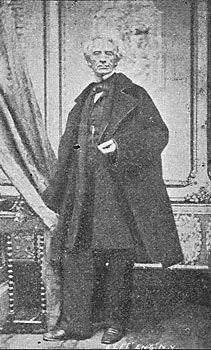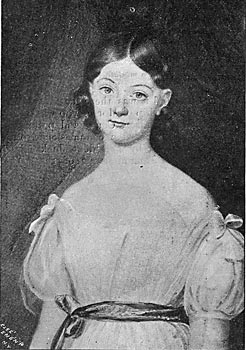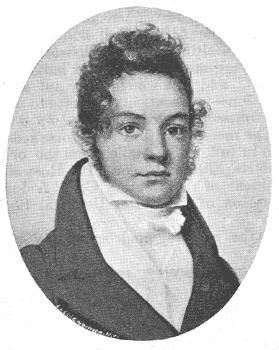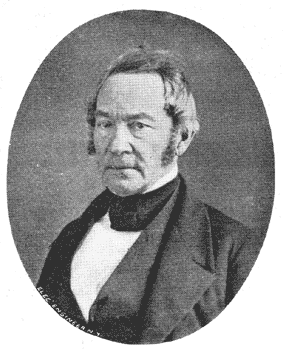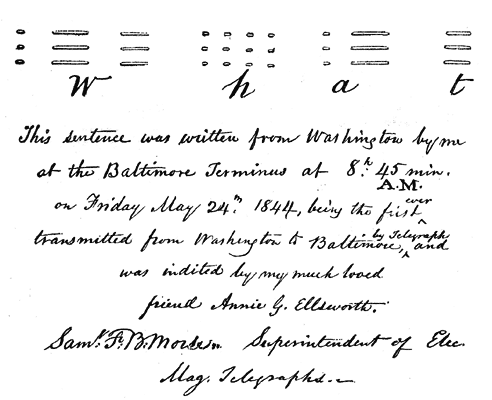The First Telegraph Message and Its Author
|
[Trade Journal] Publication: The Electrical Engineer New York, NY, United States |
||||||||||||||||
|
THE FIRST TELEGRAPH MESSAGE AND ITS AUTHOR.
THE fact that the Old Timers meet this week in Washington, with the United States Military Telegraph Corps, gives renewed and special interest to the occurrences associated with the sending of the first telegraph message from that city to Baltimore, in 1844. The story is a familiar one in its main incidents, but deserves to be retold in connection with the present interesting reunion. As early as 1838, Prof. Morse endeavored to secure the aid of Congress in the construction of a telegraph line between Washington and Baltimore, and in spite of rebuff and failure he persisted in his application, until, in 1843, it was proposed by John P. Kennedy, of Maryland, to appropriate $30,000 for a series of experiments to test the merits of the telegraph. Even then the scheme met with sarcasm from some and ridicule from others. One Congressman wanted half the sum for experiments in mesmerism. Mr. Houston suggested that Millerism was equally entitled to pecuniary aid from Congress and Mr. John White, of Kentucky, in the chair, remarked, amid much laughter, that it would require a scientific analysis to determine how far the magnetism of mesmerism was analogous to that to be employed in telegraphs. But at last the bill passed the House and went to the Senate. There it did not encounter persiflage, but the procrastination of the slow-moving upper chamber was perhaps even more dangerous to it. The last evening of the session found it a rank outsider, with 119 bills ahead of it. Morse was a sanguine man, but the situation seemed to him hopeless. With a heart much heavier than his modest gripsack he prepared to return to New York. Meantime his old college friend, Henry L. Ellsworth, then Commissioner of Patents, was doggedly working for the bill in the small hours of the night, and at last he got it through five minutes before the adjournment, only one other measure passing after it. Next morning, March 4, Miss Annie G. Ellsworth, daughter of the Commissioner, hurried to Prof. Morse's hotel to give him the news and bear him away in triumph to breakfast with her father and mother. We can readily imagine the delight with which the despondent, incredulous inventor heard the news, and the pleasure with which he then promised the bright and winning young school-girl that she should send the first message over the wires.
A year later this promise was carried out. The line between Washington and Baltimore had been finished, and Morse had set up his instrument in the Supreme Court, in Washington, while Alfred Vail had the other at Mount Glare depot, in Baltimore. Miss Ellsworth now gave Morse the message suggested to her by her mother, "What hath God wrought," and that wonderfully apt sentence—a genuine inspiration—was sent in triplicate to Baltimore. It was the first message ever transmitted by a recording telegraph. The message with Prof. Morse's endorsement is here shown in full, in fac-simile, from the original as preserved by Miss Ellsworth, now Mrs. Roswell Smith, wife of the president of the Century Co. A duplicate of it is in the possession of the State Historical Society at Hartford, Conn.
Through the courtesy and assistance of Mr. W. W. Ellsworth, the secretary of the Century Co., we are enabled to accompany this brief account of two very dramatic and memorable incidents by portraits of the participators in them. The engraving of Mrs. Smith has been made from an admirable miniature on ivory, painted at the time of these occurrences in Washington. In view of her early association with the telegraphic art and her ardent interest in Morse's success, it seems to us that the Old Timers could not do a more graceful thing during their present meeting in Washington than to toast Mrs. Smith, and elect her an honorary member of their organization. A word or two &bout Mrs. Smith's father, the Hon. Henry L. Ellsworth, will not be out of place. He was of New England birth, twin brother of the Hon. W. W. Ellsworth, at one time chief justice of Connecticut; and son of Oliver Ellsworth, third Chief Justice of the United States. He graduated from Yale College as a member of the class of 1810, and it was there that he made the acquaintance and friendship of Morse, who was his classmate. After farming at Windsor, Conn., and practicing law at Hartford, he was appointed a commissioner to the Indian tribes of the Far West by President Jackson, who later made him the first Commissioner of the U. S. Patent Office. This office was created in 1836, and he was its incumbent until 1845, when he resigned. Prof. Morse was extremely fortunate in having such a man as, a personal friend, for Mr. Ellsworth was, not only distinguished by birth and culture, but by great energy and executive ability. While to-day it might seem a little singular to have the head of the Patent Office actively lobbying on the floor of the Senate for a struggling inventor, there can be no doubt that his action at that time was considered entirely free from impropriety, and that but for his zealous work during the crowded closing hours of the session the introduction of the telegraph might have been deferred many years and Morse might have suffered the fate of many other deserving inventors.
This act of friendship to Morse was not the only public service of this talented man. As already mentioned, he dealt with, the difficult questions connected with the relationship between the Government and the Indian tribes, and his attitude toward "Poor Lo" may be gathered from the fact that Washington Irving accompanied him on one of his tours of investigation. As the first head of the Patent Office he did magnificent work in organizing the new Agricultural Bureau, that has since developed into a great department, represented in the President's Cabinet. He was one of the earliest to recognize the value of, and to invest in, the prairie lands of the West; and it is believed he used the first mowing machine introduced there. But while, as has been said, " the patience, enthusiasm and industry of Mr. Ellsworth in this work entitle his name to the grateful remembrance of the American farmers," it is not less true that his disinterested support of the great inventor in the hour of trial must ever secure for him, with his daughter, a warm place in the affection of the telegraphers of America. It is with no small pleasure that the editors of THE ELECTRICAL ENGINEER present in this issue these portraits, now published for the first time, and tell again, though briefly and inadequately, the ever memorable story of the first message.
With regard to the portrait of Morse, it may be stated that it is taken from a very rare photograph in the possession of F. W. Jones, Esq. of the Postal Telegraph Co. The familiar portraits of Morse show him much later in life, with a full, flowing beard.
|
